On September 8, 2002, Pete Sampras beat his arch rival Andre Agassi 6-3, 6-4, 5-7, 6-4 to win his fifth U.S. Open singles title and his 14th career major singles title. Seeded No. 17 and without a tournament title since Wimbledon in 2000, Sampras silenced his critics that offered that he is washed up and, at age 31, becomes the U.S. Open’s oldest men’s singles champion since 35-year-old Ken Rosewall wins the title in 1970. “To beat a rival like Andre, in a storybook ending, it might be nice to stop,” Sampras says in his post-match press conference. “But I still love to compete. I’ll see in a couple of months where my heart is and my mind. My head is spinning.”
So how did Sampras finally come to the decision to retire from tennis, with his win over Agassi being his walk off match? It didn’t come until many months later, after many talks and hitting and practice sessions with his coach Paul Annacone, as Hall of Fame journalist Steve Flink details in his book “Pete Sampras: Greatness Revisited” (for sale and download here
The following is an excerpt from the book, that details Sampras making his final retirement decision. Fifty weeks after his U.S. Open win – without striking another competitive shot following his match-clinching last backhand volley winner against Agassi – Sampras officially announced his full retirement from the sport on the opening night of the 2003 U.S. Open.
Sampras remembered the feeling afterward his singularly satisfying 2002 U.S. Open triumph. He said in 2019, “I had to figure out what was next with my tennis. I didn’t know what to feel. I flew home the night I won the Open and just enjoyed that. Two or three months later I was talking to Paul about what was next and getting ready for Australia, but I was not emotionally ready. So I felt I would see how I felt about playing Indian Wells or Miami in 2003. I was still hitting balls but just didn’t want to do the work it took for the reward at the end. It just seemed unbalanced to me. I didn’t feel like doing the practice or the gym work. Something just came out of me that I can’t really explain. The moment when I knew I was going to retire was when I was in Palm Desert watching Lleyton Hewitt play a first-round match at Wimbledon in 2003, thinking that was the last place I wanted to be. That was when I knew I was done.”
That was when I knew I was done.”
Annacone recalled it slightly differently. He said, “We literally went six months of hitting a couple of days and then not hitting, getting ready for a tournament he did not end up playing. We had so many great talks about life. And then in April, when we were getting ready for Wimbledon, I walked in the front door when I came by and he said, ‘I am done.’ I said, ‘Done with what?’ And he said, ‘I am not playing anymore. I am done.’ He explained that he had done everything he wanted to do. He said he realized why he played and that was to prove to himself what he could do. He said he didn’t need to prove anything anymore.”
At the U.S. Open of 2003, an official retirement ceremony took place. Sampras had a lot of family there, including his parents. His wife and infant son, Christian, were out in the evening air on Arthur Ashe Stadium, sharing the celebration with him.
No farewell could have been more fitting. Sampras had essentially announced himself to the tennis world at 19 when he became the youngest man ever to win the U. S. Open in the springtime of his career. Twelve years later, in the autumn of his career, with so many skeptics writing his professional obituary, when most of the tennis community at large was highly skeptical, he had closed the curtain with another triumph at the Open.
S. Open in the springtime of his career. Twelve years later, in the autumn of his career, with so many skeptics writing his professional obituary, when most of the tennis community at large was highly skeptical, he had closed the curtain with another triumph at the Open.
Reflecting on his sterling career now almost two decades after it ended, Sampras mused, “I could sit here now and look back on it and say, ‘Should I have tried a different and larger racket for the French Open? Sure. Do I wish I had communicated better about my health and that I didn’t have an ulcer for two years? Yes. I really do regret not communicating better with Paul Annacone and my team and whoever was close to me about what was going on.”
Having said that, Sampras believed, “There are always some regrets. Internalizing a lot of stuff contributed to my ulcer. I do remember one conversation with Paul Annacone in 1998 when I was trying to break the No. 1 record and I told him I was stressed out and struggling. My hair was falling out. I let my guard down, which was unusual. But I have very few regrets. I look more at the positives. I achieved some amazing things. I didn’t want to show any vulnerability. I didn’t worry about what people were thinking. Being self-willed and self-focused with the blinders on made me a great player. I kept things close to my vest.”
My hair was falling out. I let my guard down, which was unusual. But I have very few regrets. I look more at the positives. I achieved some amazing things. I didn’t want to show any vulnerability. I didn’t worry about what people were thinking. Being self-willed and self-focused with the blinders on made me a great player. I kept things close to my vest.”
Following up on that theme, Sampras said, “You look at Roger and Rafa and Novak today and they are much more social and more outgoing than I was and maybe it is through social media and where we are in society. Maybe if I had been playing now I would have been more like these guys. It is just a different mentality. In my generation everyone was a little more separate and we all got along fine, but now Roger has Rafa’s text number and they all text each other and have Instagram. Knowing Roger a little bit, I guess he can be the life of the party in the locker room. I was more in the corner away from everyone and I loved it on the last weekend of Wimbledon when nobody was in the locker room.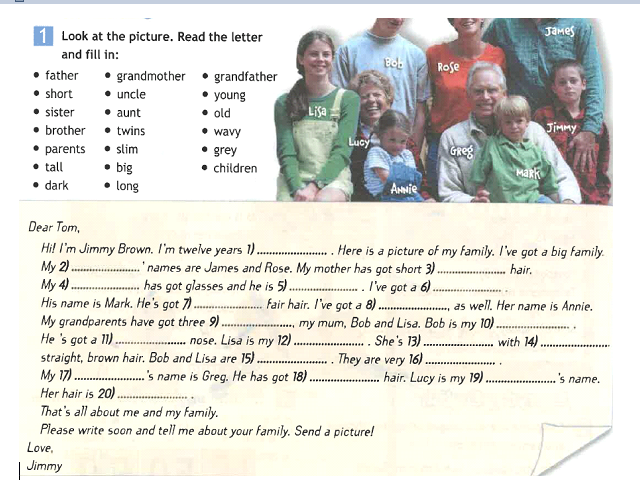 I am a lone wolf. I get energy being by myself. I like being alone. That is how I am wired and how I have always been and it was the way I liked it throughout my career.”
I am a lone wolf. I get energy being by myself. I like being alone. That is how I am wired and how I have always been and it was the way I liked it throughout my career.”
Speaking of how he viewed his illustrious career, what meant the most to Sampras was his longevity. “Being the best in the game for almost half of my career meant a lot to me,” he said. “I did it in a certain way that was humble and it was my style. I feel I was a talented player with a big game that made guys uncomfortable. I just tried to conduct myself the way I am, in a very understated way, keeping my emotions in check and being a good role model for kids on behavior. That was important to me and at the same time that is who I am. I let my racket do the talking and played big matches well and I felt that the bigger the match was, the better I am.”
Filed Under: HEADLINES AND FEATURES, Lead, Top Stories Tagged With: Andre Agassi, paul annacone, Pete Sampras, steve flink, US Open
By Admin
By Randy Walker@TennisPublisher John McEnroe and his younger brother Patrick McEnroe will be playing in the first-ever tennis match in the Serengeti this coming December.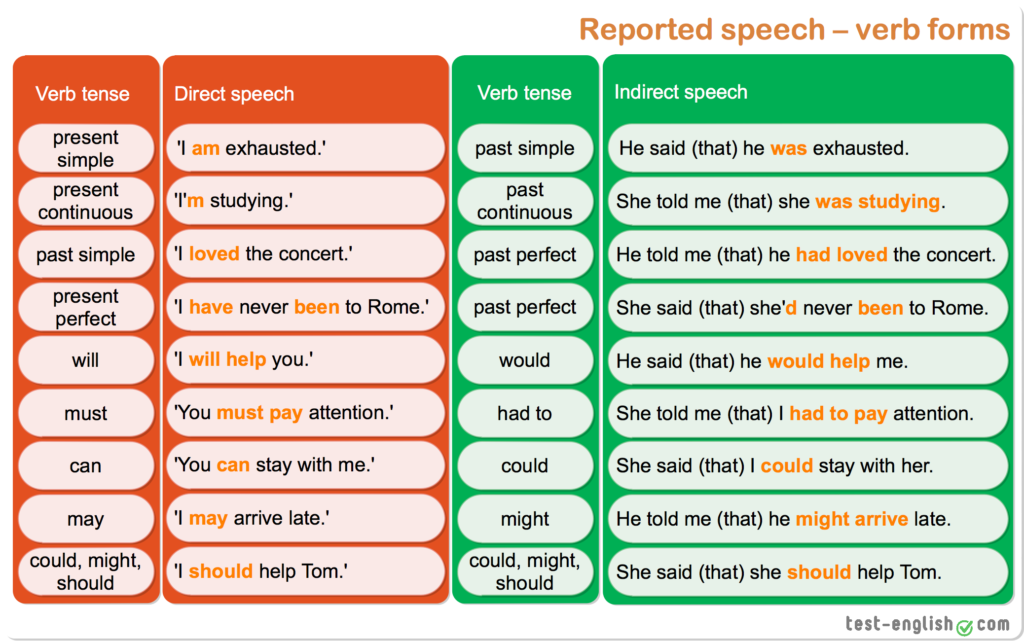 A special tennis court will be constructed on the Tanzanian plain as part of the bucket-list trip for tennis fans to travel to Tanzania with the McEnroe brothers with Insider Expeditions […]
A special tennis court will be constructed on the Tanzanian plain as part of the bucket-list trip for tennis fans to travel to Tanzania with the McEnroe brothers with Insider Expeditions […]
By WTM
By Randy Walker @TennisPublisher It was March Madness but it wasn’t the NCAA Championship and wasn’t even basketball. The men’s tennis teams from the University of Georgia and the University of Tennessee played in one of the great college matches in recent memory at the Dan Magill Tennis Complex in Athens, Georgia on Saturday, March […]
By Admin
by Randy Walker @TennisPubisher Parton Keese with the New York Times had a clever lead sentence in his article from July 20, 1973 when equal prize money was announced for the first time at the U.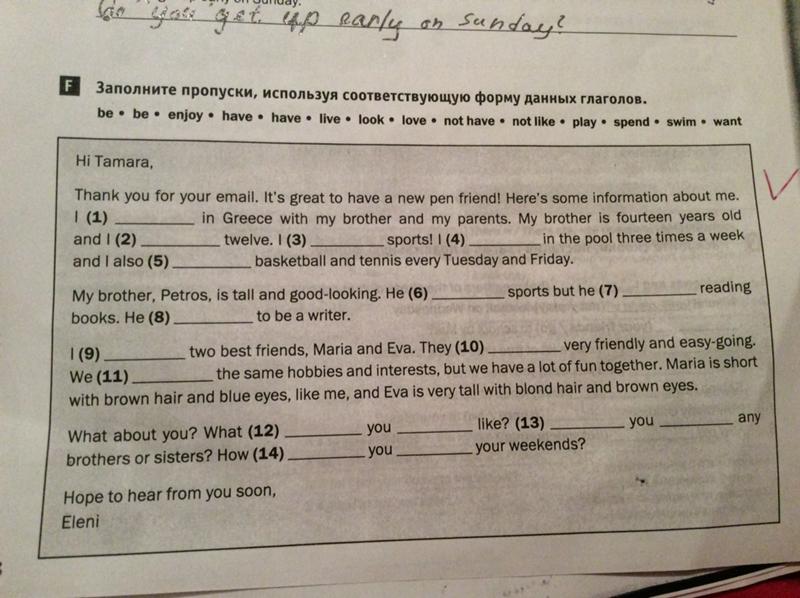 S. Open tennis championships. It also couldn’t have been a better marketing tag-line for Ban Deodorant as well. Wrote Keese, […]
S. Open tennis championships. It also couldn’t have been a better marketing tag-line for Ban Deodorant as well. Wrote Keese, […]
By Admin
By Randy Walker @TennisPublisher Is this the tennis equivalent of an archeologist finding a new pharaoh’s tomb in Egypt? A new slice of tennis history was uncovered after John Isner advanced into the final of the 2023 Dallas Open. Often when there is some sort of quirky bit of tennis history happening or about to […]
Pete Sampras and Roger Federer play doubles in a charity event.Matthew Stockman/Getty Images
Roger Federer respects and admires Pete Sampras.
After spending much of his career chasing Sampras' records, could Federer be trying to emulate his idol in one final way?
Like Sampras, could Federer retire on top?
It's hard to imagine Federer lingering like Lleyton Hewitt, hoping for wild cards long after he can no longer play his way into tournaments.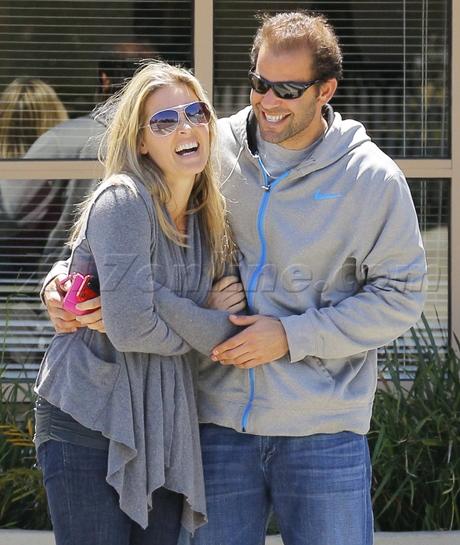
Right now, Federer is far from that. He is ranked No. 3 and is the reigning Wimbledon champion.
However, as each year passes, questions about his retirement mount. When? Why? How?
Just how does one of the greatest of all time call it quits?
Perhaps the way Sampras retired offers some clues.
Sampras announced his retirement at age 32. It was nearly a year after his final match, a win over Andre Agassi in the 2002 U.S. Open final.
Up until he won the U.S. Open, Sampras was going through a slump in 2002. He hadn't won a title in two years. He had been beaten badly by a young Marat Safin at the Australian Open. He also suffered a first-round loss in the French Open and a second-round loss at Wimbledon.
Last year, Sampras told ESPN writer Greg Garber that it was the lowest point of his career.
Yet Sampras felt he had one more Slam in him.
He did. He defeated Agassi, 6-3, 6-4, 5-7, 6-4, in an epic U.S. Open final.
After the match, in an interview with Sports Illustrated, Sampras said, "To beat a rival like Andre, in a storybook ending, it might be nice to stop.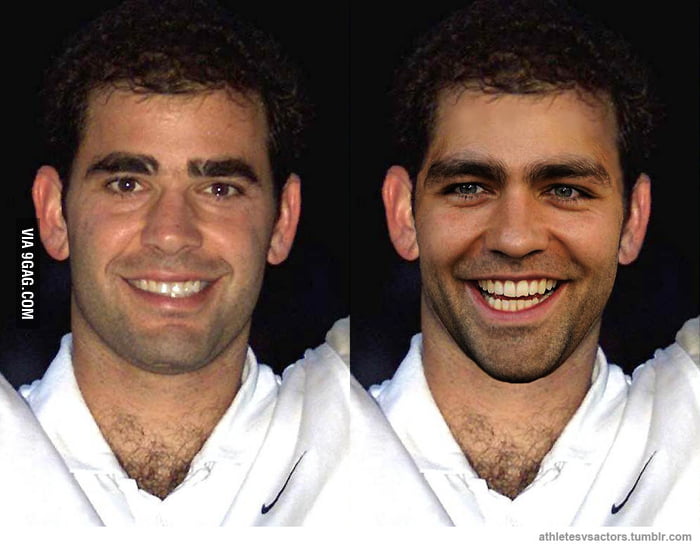 ..But I still love to compete. I'll see in a couple of months where my heart is and my mind. My head is spinning."
..But I still love to compete. I'll see in a couple of months where my heart is and my mind. My head is spinning."
Even though he hinted at retirement, Sampras made no formal announcement for a while. Tournaments came and went; he simply did not enter.
Perhaps after reaching the mountain top at that age, Sampras felt no need to risk falling back into the valley.
For players like Sampras and Federer who pursue perfection, mediocrity must be unbearable. Hanging around and hovering outside the top 50 have to be unthinkable.
When Sampras made his retirement official, he told CBS Sports, "I'm done, 100 percent done. I'm 100 percent retired. I'm at peace with it. It's time to call it a career."
He went out on top and on his terms. Will Federer do the same?
Federer turns 32 in August. Earlier this year he addressed his retirement with BBC Sport.
Eventually, it will be clear that it is time to stop but the time is definitely not now…But then again, things change very quickly.
You have to be ready for it and open to it. I'm not naive that I can play for 15 more years but I would like to give myself a chance to play for many more years to come.
Federer told the Daily Mail that he's already made plans to play at Wimbledon in 2014.
Still planning ahead, Federer appears to have no immediate plans to retire. However, as he said, things could change quickly.
A surprise win at Roland Garros might hasten his retire.
He enters the French Open after a horrible loss to Rafael Nadal in Rome. Another French Open title would enhance his legacy, but a win at Roland Garros is a lofty goal with Nadal around.
Then again, so was Sampras winning the U.S. Open at age 31 against Agassi.
If Federer manages to win the French Open over Nadal, will he retire?
Pete Sampras has won more Grand Slam singles titles than any other tennis player. He easily managed to win the game in his youth, and in his 30s he remained at the peak on professional tours. Every time Pete went on the court, there was an extraordinary game. Due to his devotion to tennis, the biography of the champion is devoid of outrageousness, but even skeptics are sure that there is a mystery in the athlete.
Every time Pete went on the court, there was an extraordinary game. Due to his devotion to tennis, the biography of the champion is devoid of outrageousness, but even skeptics are sure that there is a mystery in the athlete.
Pete Sampras was born on August 12, 1971 in Washington, DC. His parents Sam and Georgia already had two children, Stella and Gus. The younger Marion was born later.
Father and mother, who have Greek roots, made their native culture, including religion, an important part of the family life. Sam worked as a design engineer for the Department of Defense, and at the end of his life became a co-owner of a store. Georgia was engaged in cosmetology at a local beauty salon, and later became a housewife.
Pete found time for a personal life only towards the end of his sports career. He began dating American actress Bridget Wilson in September 1999, and a few weeks before winning his record 13th Grand Slam title, he proposed to his chosen one. The couple got married in September 2000.
The couple got married in September 2000.
Wife gave celebrity two sons, Christian Charles (2002) and Ryan Nicholas (2005). The family lives in Lake Sherwood, California and leads a closed lifestyle.
Sampras actively maintains an account on Facebook, where he often posts photos, but Instagram is full of fans for him.
The boy discovered tennis when he was a child, after finding an old wooden racket. After the family moved to California, the father brought his son to a sports club, although the child was diagnosed with a disease that could interfere - thalassemia (lack of iron in the blood). But the young man's right hand was so powerful and accurate, and the left, two-handed, so similar to Bjorn Borg's blow, that it was impossible to miss such a talent.
At the request of the coach, the young man honed his sports skills with older rivals, so the mentor developed his will to win. By 1981, Pete realized that he wanted to become a professional tennis player, and already in 1984 he was actively standing out from the players of his age.
In 1988-1989, Sampras solidified his resolve to get into professional tennis. His attacking style of play helped him win half of the ATP Tour tournaments and take a good position in the rankings. During this period, there was a breakup with the coach, and Pete completely focused on big-time sports.
The tennis player's victories brought him closer to the Wimbledon competitions, allowed him to win the Grand Slam tournament and prepared him for a meeting on the court with Andre Agassi. The young athlete then easily coped with the opponent, receiving the title of the youngest champion of the US Open.
The competitions of the 1990s brought new achievements, changes in tactics and repeatedly gave Pete the titles of the best player of the season. During these years, Andre Agassi and Boris Becker took defeats from Sampras more than once, but the American himself experienced difficult matches with Yevgeny Kafelnikov and Magnus Gustafsson.
The second win at Wimbledon was not easy for the tennis player: the professional illness of all players made itself felt - there were problems with the feet and hamstrings (high growth of 185 cm also affected).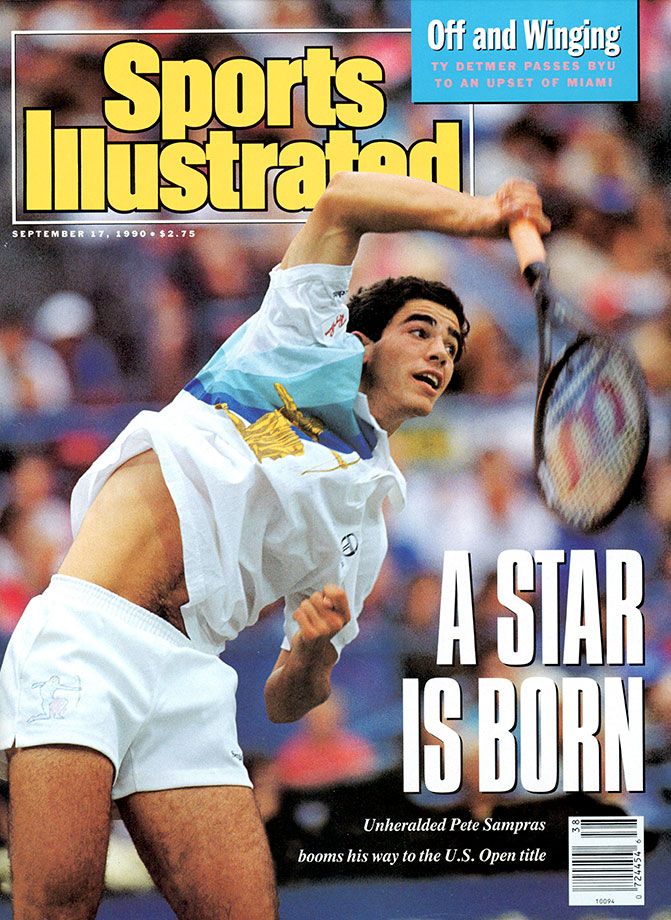 Nevertheless, the athlete managed to keep the lead in the ranking: he received the third US Open title, won the Davis Cup (1995), won the singles against Andrei Chesnokov and Yevgeny Kafelnikov, and won the doubles tournament.
Nevertheless, the athlete managed to keep the lead in the ranking: he received the third US Open title, won the Davis Cup (1995), won the singles against Andrei Chesnokov and Yevgeny Kafelnikov, and won the doubles tournament.
Despite the tennis player's rare losses, by the end of 90's critics began to talk about the fact that the best years of their "Jordan Tennis" behind. Pete himself admitted that the desire for a permanent 1st place had a negative impact on his health, both physical and mental.
Embed from Getty Images Rafael Nadal, Pete Sampras, Andre Agassi and Roger FedererDue to constant injuries, the athlete began to refuse to participate in tournaments, but recovering, he invariably emerged victorious. He remained in this state during the 2000 Wimbledon games, which brought Sampras another Grand Slam title. Pete then reached the final of the US Open, but Marat Safin beat him in three sets.
The 2001 season was quiet for the celebrity, although there were some strong games against Andre Agassi, Patrick Rafter and Safin. Nevertheless, Pete's rating fell to 10th place for the first time in 12 years. Attempts to recover in sports (change of coach, lifestyle) did not bring big changes in the career of a tennis player. In doing so, he reached his third US Open final and won his 14th Grand Slam singles title.
Nevertheless, Pete's rating fell to 10th place for the first time in 12 years. Attempts to recover in sports (change of coach, lifestyle) did not bring big changes in the career of a tennis player. In doing so, he reached his third US Open final and won his 14th Grand Slam singles title.
And yet, in August 2003, at the US Open, the athlete officially announced his retirement from tennis.
Only Roger Federer eclipsed the championship record when he defeated Andy Roddick in singles at Wimbledon in 2009.
Now Pete is more interested in children and family. The former player did not immediately come to such a rhythm of life. After retiring from professional tennis in 2003, Sampras continued to play in numerous exhibition matches for several years. The champion acted in films playing himself, and in 2007 his name was included in the lists of members of the International Tennis Hall of Fame.
In 2008, the previously closed star published the book Reflections of a Champion. Lessons from Tennis Life,” in which he talks about what it was like to have what he calls a gift. Pete writes about the personal trials that he had to face during his career, shares his memories of the events in it with fans.
Lessons from Tennis Life,” in which he talks about what it was like to have what he calls a gift. Pete writes about the personal trials that he had to face during his career, shares his memories of the events in it with fans.
The former athlete only occasionally picks up a tennis racket or golf club, but enjoys attending competitions and sharing tips with beginners.

There was a good reason for that: Pete held the record for the most Grand Slam wins - 14 (the same number as Federer). But in the epic battle between Roger Federer and Andy Roddick in the 2009 Wimbledon final, the Swiss defeated both Americans: one standing in front of him, the other sitting on the podium, who stood up after the end of the match, congratulating the new record holder.
Born 08/12/1971
Personal achievements :
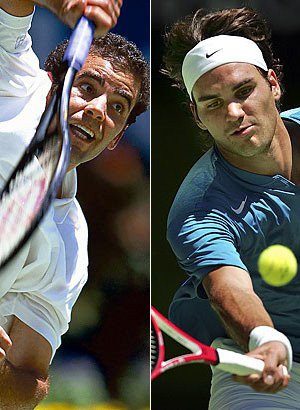
Team Achievements :
Petros (Pete) Sampras was born on August 12, 1971 in Washington, DC, USA. In his youth, his idol was Rod Laver. Little Sampras, who has Greek roots, did not yet imagine that he would go to the center court, named after Rod Laver, at the Australian Open a huge number of times, but he knew that, unfortunately, he was not left-handed, as his ideal. Pete's parents were not involved in tennis, so they did not initially have any sports plans for the child.
Sampras started playing tennis at the age of seven, which is quite late by the standards of many professionals, but it was enough for him, and how.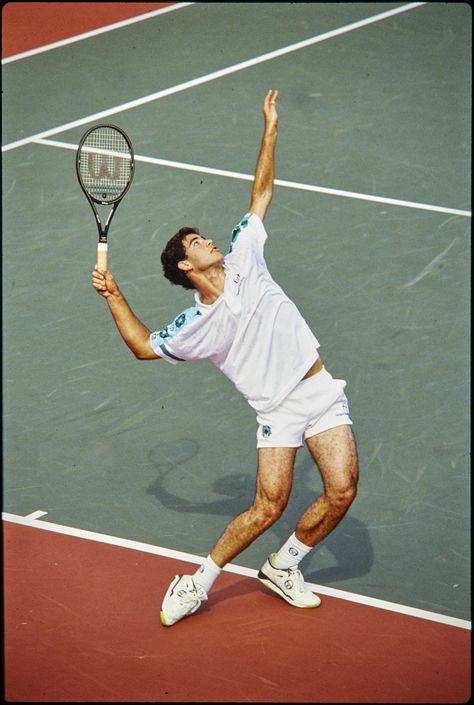 Ten years later, he turned pro and changed his two-handed grip from backhand to one-handed, and a year later, in 1988, he already entered the top hundred. The next year was not very convincing for him, a series of ups and downs from this hundred, work in the place of a border guard.
Ten years later, he turned pro and changed his two-handed grip from backhand to one-handed, and a year later, in 1988, he already entered the top hundred. The next year was not very convincing for him, a series of ups and downs from this hundred, work in the place of a border guard.
But his career had a completely different occupation in store for him. In 1990, Sampras won the tournament in Philadelphia, in his homeland, thereby arousing tremendous interest in his person. Then, having taken his first grass title in Manchester, although he flew out in the first round of Wimbledon, he showed that he was not a passing opponent on grass, which a few years later everyone was fully convinced of. By the US Open, he came 12th in the ranking, not for nothing that a dozen is considered a lucky number! He took this tournament, knocking out such players as Muster, Lendl, McEnroe on the way, and in the final, without much difficulty, in three sets, the young, but already world-famous, Agassi was defeated. Andre, by the way, by that time did not yet have a BS; in this, as in many other things, Pete was ahead of him!
Andre, by the way, by that time did not yet have a BS; in this, as in many other things, Pete was ahead of him!
Sampras already had his own style of play: after a great serve, he often ran to the net, where no one on the tour played so skillfully. It is worth noting that Pete's height is 185 centimeters, which gave even more flavor to his signature jump smashes! Net virtuosos like Sampras appear very rarely on the tennis horizon. Of course, this style of play is not suitable for clay, where he ultimately did not gain much success, but it is effective for fast courts.
Young Pete SamprasAt 19In 91, Sampras is already an honorary member of the top ten in the ranking, takes tournament after tournament and for the first time for himself beats the first racket of the world, who at that time was Boris Becker. However, almost immediately after this defeat, Becker was pushed out of this position. The German took revenge on him at the final tournament of the year, but this did not stop Pete from beating the rest of the elite and becoming the winner of this start!
More and more: Pete opens up new horizons in his career and in 1992 wins his first tournament on clay in Kitzbühel, he did not meet any very serious opponents there, but strong old-timers of clay could always give him a lot of trouble.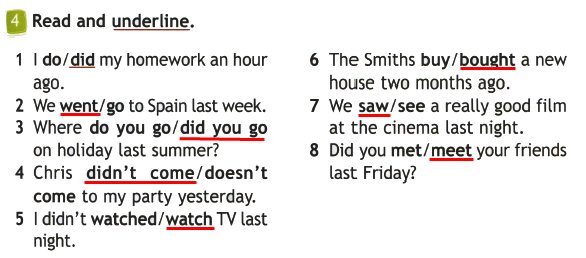 At the US Open, he reaches the final, where he loses to Stefan Edberg in four games. In general, Sampras rarely lost finals: out of 88 major matches, he lost only 24, most of which occurred at the beginning of his career.
At the US Open, he reaches the final, where he loses to Stefan Edberg in four games. In general, Sampras rarely lost finals: out of 88 major matches, he lost only 24, most of which occurred at the beginning of his career.
In 1993, Wimbledon conquered him for the first time, which later became like a home for Sampras, although the US Open, where he won for the second time in his career, is, of course, dearer. After winning Tokyo, Pete finally takes first place. And until April 10, 1995, no matter how hard the rivals tried, no one displaced him. The most interesting thing is that Agassi moved Sampras from the first line of the rating, so they had a continuous argument, even personal meetings speak for themselves - 20-14 in favor of Pete.
Well, before that, the whole tennis world was under the feet of Pete, in 1994, out of eighteen tournaments in which he participated, Sampras won ten, including the Australian Open and the second Wimbledon in a row. Roland Garros does not submit to Pete, he again lost to the American Jim Courier, who seemed to be considered a convenient opponent for him (16-4 in personal meetings). But, as it was already written earlier, Pete could not have passing opponents on clay.
Roland Garros does not submit to Pete, he again lost to the American Jim Courier, who seemed to be considered a convenient opponent for him (16-4 in personal meetings). But, as it was already written earlier, Pete could not have passing opponents on clay.
In 1995, Sampras ruined the celebration on the streets of Moscow: in the Davis Cup final, it was only thanks to him that the Americans then took the silver salad bowl (which he had already taken with the team at 1992), all three points were brought by the great Pete, but he spoiled the holidays for all countries, sweeping away everyone in his path in the 90s. At the same time, Sampras has already gained so many fans that his victories for many became this very holiday! Also this year, he won Wimbledon and the US Open for the third time in a row.
In 1996, Sampras regained the first line of the rating and held it until 1998. The American fairy tale in England was interrupted by the Dutchman Richard Krycek, who beat Sampras, and then became the winner of Wimbledon.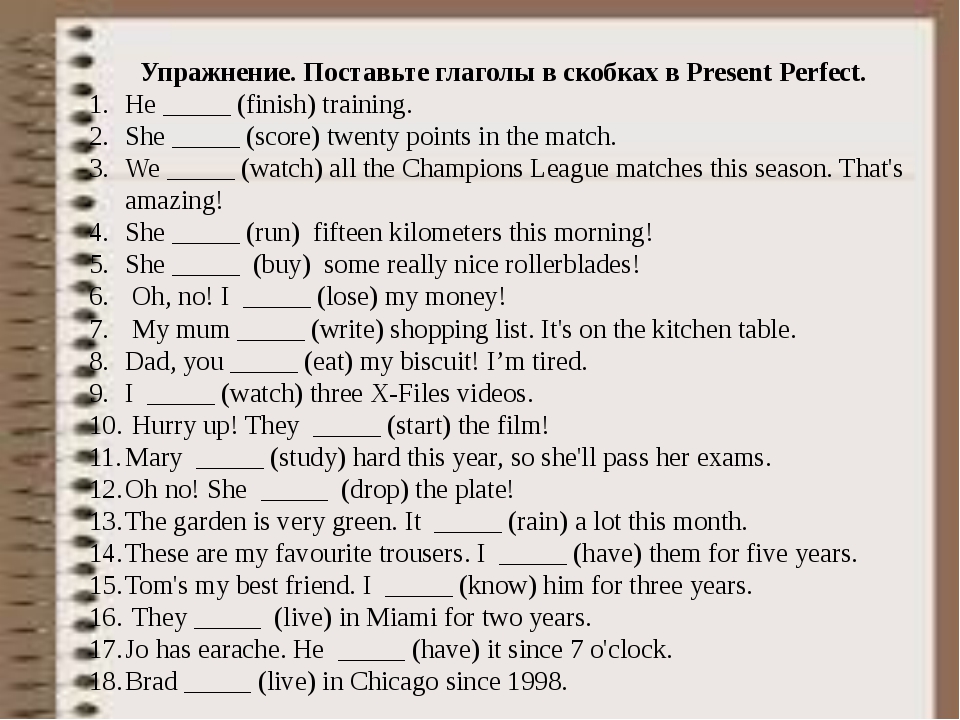 At Roland Garros, Sampras finally reached the semi-finals, but there Kafelnikov had already lowered him from heaven, giving him a steering wheel in one of the sets, after this blow, Pete was already afraid to climb so far into the wilds in Paris. But Sampras won the US Open, being on the verge of not winning a Grand Slam for the first time in four years. Problems appeared in the quarterfinal duel with the Spaniard Alexa Corretha. Undoubtedly, the cool grounder Corretja jumped over his head on hard, losing 7-9in the decisive tie-break (recall that the US Open is the only Grand Slam tournament in which tie-breaks are played in the fifth set).
At Roland Garros, Sampras finally reached the semi-finals, but there Kafelnikov had already lowered him from heaven, giving him a steering wheel in one of the sets, after this blow, Pete was already afraid to climb so far into the wilds in Paris. But Sampras won the US Open, being on the verge of not winning a Grand Slam for the first time in four years. Problems appeared in the quarterfinal duel with the Spaniard Alexa Corretha. Undoubtedly, the cool grounder Corretja jumped over his head on hard, losing 7-9in the decisive tie-break (recall that the US Open is the only Grand Slam tournament in which tie-breaks are played in the fifth set).
In 1997, Sampras became the first tennis player to receive the Sportsman of the Year award, which naturally increased the popularity of tennis around the world. In the same year, he regained his Wimbledon, on the way he did not meet a single dozen players who, apparently, were afraid of his revenge for last year's tournament! The second Australian Open also went to his piggy bank. Sampras became the second tennis player after Jimmy Connors to finish first five years in a row.
Sampras became the second tennis player after Jimmy Connors to finish first five years in a row.
However, no one prevented him from finishing first for the sixth year in a row, Connors decided not to return to the court at the age of 46 in order to regain this record. Until 2000, inclusive, he won everything and won Wimbledon after Wimbledon and regularly regained the title of the first racket of the world, but Pete was already, as they say, the king at his death, and many new and talented princes fought in confusion among themselves.
Pete SamprasIn 2000, Sampras set the record for the most wins at BS tournaments - namely 13, but he did not want such a number as a record in the future. Pete became the only player who, since 1990 to 2000 won at least one tournament in the season, which again marked the title of Sportsman of the Year!
In 2001, in the fourth round of Wimbledon, there was still an unofficial, but change of the crown. Sampras, having lost to Federer, can be said to have given the first decade of the 21st century to his care: they say, you won against me, so win against everyone. Yes, Sampras beat everyone in his decade; as Agassi said after that very 1990 US Open final: "He just kicked my ass." Almost everyone could say so, and this everyone would be absolutely right. Pete took five final ATP tournaments: at 1991, 1994, 1996, 1997 and 1999. During his career, Sampras won 762 matches and lost only 222, and Pete could have played on.
Yes, Sampras beat everyone in his decade; as Agassi said after that very 1990 US Open final: "He just kicked my ass." Almost everyone could say so, and this everyone would be absolutely right. Pete took five final ATP tournaments: at 1991, 1994, 1996, 1997 and 1999. During his career, Sampras won 762 matches and lost only 222, and Pete could have played on.
In 2002, after the triumph at the US Open, Sampras left, and who knows what would have happened if the American had remained on the court. And yet, a man like Sampras cannot completely leave tennis: in 2007 he returned and played several exhibition matches with Federer, in one of which he even won. And this once again proves that the period without Pete is a time-mystery, when already old, wise by experience, the king, who has achieved everything in this life, is still able to rule, passes the laurels to the heir, who still has everything ahead, and the bar is already higher. Real champions and kings leave beautifully, forever remaining invincible in the memory of the fans, and Pete Sampras is a vivid example of this.